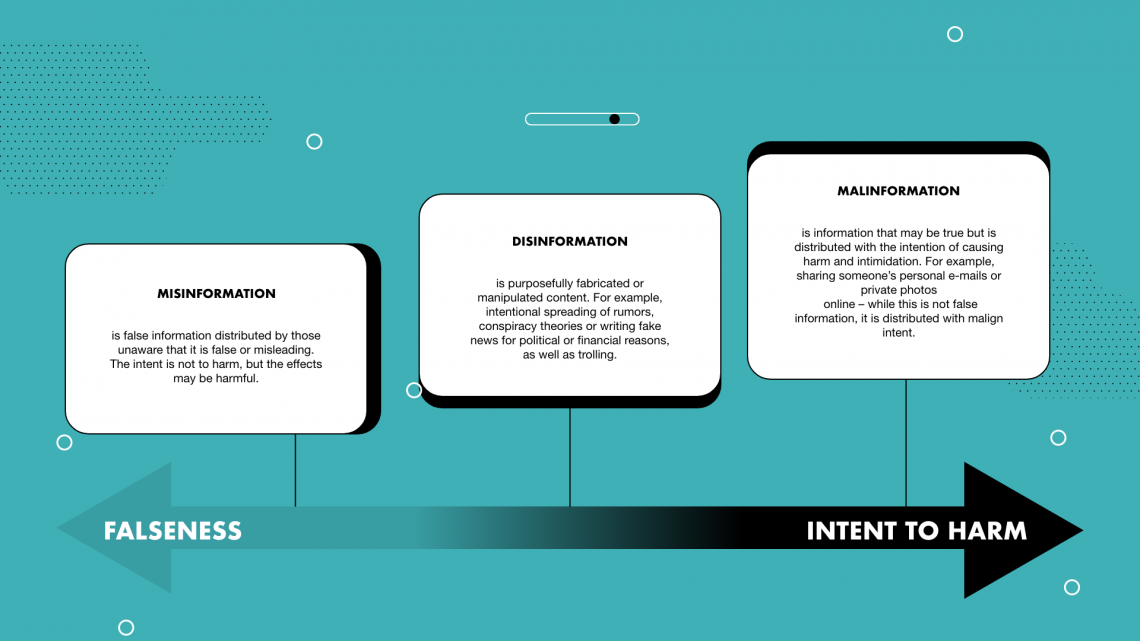This website uses cookies to improve user experience.
Read more: Terms and conditions
Information Disorder
The information space is polluted. Huge quantities of poor-quality content invade our personal information ecosystem, cloud our ability to see and constructively communicate with one another, destabilize and polarize societies, and harm the global community.
All journalistic content is supposed to be fact-checked to verify the truthfulness of the information presented. One of the key principles in journalism, according to the Society for Professional Journalists’ Code of Ethics, is to verify information using several sources. However, not even journalists always stick to this rule. Sometimes the pressure on journalists to publish quickly or perhaps a lack of training or understanding can lead authors to cut corners. At times, the purpose of unverified, exaggerated content may simply be to drive website traffic. But other content creators online, like bloggers, influencers, and your acquaintances, don’t even have any formal rules to adhere to, only their personal judgement on what’s ethical and what’s not.
Therefore, the ability to recognize and process false or inaccurate information is often up to us. We are a very important element in this system, as we can become spreaders of false content. Every time we passively accept and share information without verifying it, we add noise and confusion to an already complex media landscape. In this way, we have the same responsibility to verify the reliability of the information we share with our own networks as the content creators themselves.
There are three types of manipulative content in the information environment.
Misinformation is false information that is spread without the intent to mislead (like journalists’ mistakes, rumors, and gossip).
Disinformation is also false information, but it is deliberately created to harm or promote a person, social group, political organization, or country to earn money or just have fun.
Disinformation can often become misinformation; it all depends on who shares it and why. For example, if a politician strategically spreads false information in the form of articles, photos, or memes, it is disinformation. When a person seeing this disinformation believes it and shares it without realizing it is false, it is considered misinformation. It can become very confusing sometimes, therefore some experts have proposed using the term “amplified propaganda” instead if it can be proven that the initial spreader created it deliberately.
A lot of disinformation is based on half-truths, where lies are mixed with some truthful information or important context is withheld. This is done to give it more credibility. These disinformation reports often cite “witnesses” or “research” that may be entirely faked or misinterpreted. Disinformation is sometimes carefully crafted by specialists or political technologists to persuade public opinion in favor of a cause or simply to sow doubt or controversy.
Malinformation is information that is generally true but is used to cause damage to a person, organization, or country. It can take the form of leaked personal information, intimate photos, or other compromising content. Its main purpose is to destroy the reputation of individuals or organizations.









